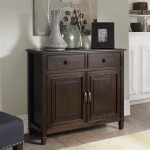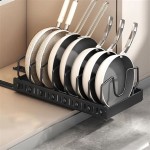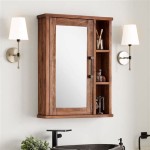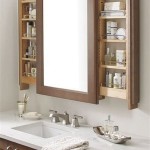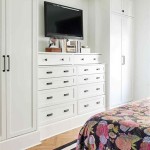Oak Kitchen Cabinet Crown Molding
Crown molding adds a touch of elegance and sophistication to any kitchen, and when paired with oak cabinets, it creates a timeless, classic look. This article explores the various aspects of selecting, installing, and maintaining oak kitchen cabinet crown molding.
Oak, a hardwood known for its durability and attractive grain patterns, is a popular choice for kitchen cabinetry. Crown molding, typically installed where the cabinets meet the ceiling, enhances the visual appeal of these cabinets by providing a seamless transition and adding architectural detail. The combination of oak cabinets and crown molding offers a versatile design element suitable for a range of kitchen styles, from traditional to contemporary.
Several factors influence the selection of appropriate crown molding for oak kitchen cabinets. The size and style of the kitchen are primary considerations. Larger kitchens can accommodate more substantial molding profiles, while smaller kitchens benefit from simpler, less imposing designs. The existing architectural style of the home also plays a role. A Victorian-era home, for example, might call for ornate crown molding, while a modern home might benefit from a cleaner, more streamlined profile.
The specific type of oak used for the cabinets also influences molding selection. Red oak, with its prominent grain pattern, pairs well with bolder molding profiles, while white oak, with its smoother, tighter grain, can accommodate both simple and more complex designs. Matching the wood species of the crown molding to the cabinets creates a cohesive and harmonious look. However, contrasting wood species can also be used to create a visually interesting focal point.
Beyond wood species, the finish of the molding should complement the cabinets. A stained finish can highlight the natural beauty of the oak, while a painted finish offers a wider range of color options and can create a more contemporary feel. Matching the stain or paint color of the cabinets and molding creates a unified look, while contrasting colors can add a touch of drama and personality.
Proper installation is crucial for achieving a professional and long-lasting result. Accurate measurements and precise cuts are essential. The molding should be securely fastened to the cabinets and the ceiling using appropriate fasteners and adhesives. Depending on the complexity of the molding profile and the specific installation requirements, professional installation may be recommended.
Several tools are necessary for installing crown molding. A miter saw is essential for making accurate angle cuts, while a coping saw allows for intricate cuts required for joining molding pieces seamlessly. A nail gun simplifies the fastening process, and a level ensures proper alignment. Other essential tools include a measuring tape, a pencil, safety glasses, and a dust mask.
Maintaining oak kitchen cabinet crown molding involves regular cleaning and occasional touch-ups. Dust and grime can be removed with a soft cloth and a mild cleaning solution. Avoid using harsh chemicals or abrasive cleaners, as these can damage the finish. Minor scratches and dents can be repaired with wood filler and touch-up paint or stain. Regular inspection of the molding can help identify potential issues early on, preventing more extensive damage.
Different styles of crown molding can significantly impact the overall aesthetic of the kitchen. A large, ornate molding can create a grand, traditional feel, while a smaller, simpler molding can contribute to a more contemporary or minimalist design. Consider the existing style of the kitchen and the desired outcome when choosing a molding profile.
Budget is another important consideration when selecting crown molding. The cost of molding varies depending on the wood species, the complexity of the profile, and the length required. Less expensive options, such as medium-density fiberboard (MDF) molding, can be used to achieve a similar look at a lower cost. However, MDF is less durable than solid wood and may not be suitable for all applications.
Lighting plays a significant role in showcasing the beauty of oak kitchen cabinet crown molding. Properly placed lighting can highlight the intricate details of the molding and create a warm and inviting atmosphere. Consider using under-cabinet lighting or accent lighting to draw attention to the molding and enhance the overall aesthetic of the kitchen.
The choice of crown molding can significantly impact the perceived height and spaciousness of a kitchen. Lighter-colored molding can create an illusion of height, while darker molding can make the ceiling appear lower. The size and profile of the molding also contribute to this effect. Larger, more prominent molding can make a room feel smaller, while smaller, simpler molding can create a sense of spaciousness.
Finally, the overall design cohesiveness of the kitchen should be considered when selecting crown molding. The molding should complement the style of the cabinets, countertops, backsplash, and other design elements. A well-chosen crown molding will tie all of these elements together, creating a harmonious and visually appealing space.

Mini Makeover Crown Molding On My Kitchen Cabinets How To Nest For Less

Mini Makeover Crown Molding On My Kitchen Cabinets How To Nest For Less

Adding Moldings To Your Kitchen Cabinets Remodelando La Casa

Home Decorators Collection 96 In W X 2 325 D 3 H Solid Wood Kitchen Cabinet Crown Molding Cinnamon Cm8 Cn The

13 Kitchen Cabinets Crown Molding Ideas To Finish Your Design Coco Lapine Designcoco

Diy Kitchen Cabinet Upgrade With Paint And Crown Molding

Cinnamon Spice Scribe Molding 3 4x96 Rta Cabinet Kitchen

Adding Height To The Kitchen Cabinets Tempting Thyme

Antiqued Kitchen Crown Molding

Brown Wood 01807000ch1 92 Inch Length X 4 1 Width L W Create A Crown Moulding Cherry Cabinetparts Com



